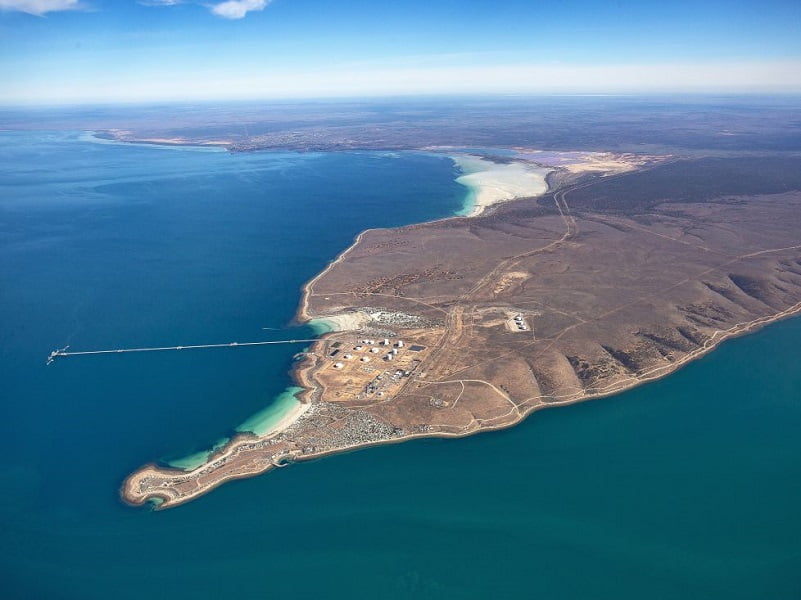A large-scale hydrogen export terminal planned for South Australia’s Spencer Gulf is one step closer to reality after the federal and state government finalised a $100 million funding agreement.
The Albanese and Malinauskas governments on Monday finalised the grant deal for the Port Bonython Hydrogen Hub, jointly committing $100 million to the project near the steel city of Whyalla.
Canberra will chip in $70 million – the maximum amount set aside for the project by the former Coalition government under its Clean Hydrogen Industrial Hubs Program, which has since been re-badged the Regional Hydrogen Hubs Program.
Seven hydrogen hubs across Australia will be funded through the $526 million program, with other hubs planned for Western Australia (Pilbara, Kwinana), Queensland (Gladstone, Townsville), New South Wales (Hunter) and Tasmania (Bell Bay).

Located on the Spencer Gulf, Port Bonython has an existing deep-water liquid hydrocarbon export terminal with 1,700 hectares of adjoining land that is prime to be developed, according to the state government.
It is located 16km from Whyalla, which is home to one of Australia’s largest steelworks – giving it the well-known moniker of ‘steel city’ – and has been a centre for the export of iron ore since the early 1900s.
But under the $593 million Hydrogen Jobs Plan, the South Australian government hopes to re-cast the region as ‘Hydrogen Valley’ and plans for a hydrogen electrolyser, hydrogen power station and hydrogen storage facility to be developed at the site.
Whyalla was selected as the site for the hub by the SA Labor party prior ahead of last year’s election, with the government approaching the market for proposals in December last year. The government had been expected to award the contracts in July, but there has been no movement.
According to the federal and state governments, the redeveloped port is expected to “host projects worth up to $13 billion and projected to generate as much as 1.8 million tonnes of hydrogen by 2030”.
Discussing the project on ABC Radio North and West SA on Monday, Prime Minister Anthony Albanese said South Australia is “primed to become a world-class, low-cost hydrogen supplier” and that the state government has a “comprehensive plan” to get there.
“We want this to move quickly. We know that there’s a global shift to clean energy and to decarbonise economies. That is an economic opportunity for Australia and one that we must seize,” he said.
Mr Albanese earlier this month said that becoming a renewable energy superpower and developing the technology such a transition requires would put Australia on a path to become an “advanced manufacturing powerhouse”.
South Australia Premier Peter Malinauskas said through the Hydrogen Jobs Plan, his government is “seizing the mantle to produce a world leading hydrogen electrolyser, power plant and storage facility”, but did not provide an update on the tender.
“We’re working closely with industry to maximise this opportunity to grow a new industry, which has potential to create thousands of jobs and improve the standard of living for South Australians for generations to come,” he said in a statement.
Australia’s hydrogen industry is projected to generate $50 billion in additional GDP and create 16,000 jobs in regional Australia by 2050, according to the federal government’s latest State of the Hydrogen Report.
The federal government is currently reviewing the National Hydrogen Strategy to ensure the country is on a path to be a global hydrogen leader by 2030, particularly in light of the Inflation Reduction Act in the United States.
In May, the federal government allocated $2 billion for a green hydrogen production credit scheme, dubbed Hydrogen Headstart, that is expected to flow to two or three large-scale renewable hydrogen projects.
Climate Change and Energy minister Chris Bown has previously described the Hydrogen Headstart Program as an “early down payment” on the federal government’s response to the Inflation Reduction Act.
Do you know more? Contact James Riley via Email.

